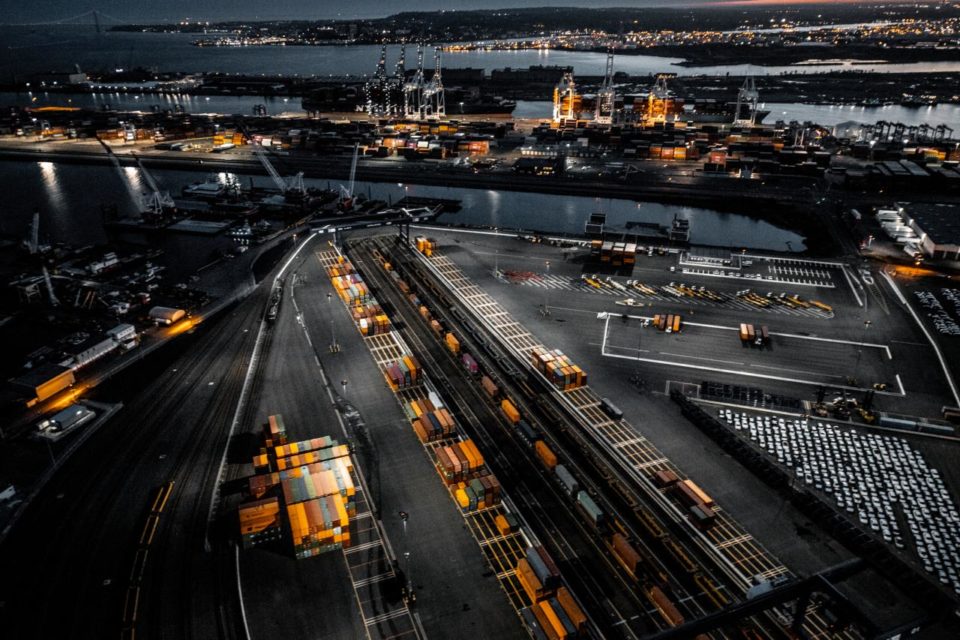Community Economic Impact of New Distribution Centers

Distribution Centers (DC), also known as fulfillment centers are an increasingly important part of retail and the overall economy because of the rise of online commerce. Some critics argue that distribution centers (the term used throughout this report for expediency) are a drag on the economies where businesses build them.
Economic research conducted by the U.S. Chamber of Commerce provides an analysis of new distribution centers that takes into account the full scope of a center’s impact on local economies. This research used a model of 30 Metropolitan Statistical Areas (MSAs) that represent the geography and population distribution of the U.S. economy. The analysis dispels the inaccurate arguments from critics. On average, a new DC employing 3,000 workers resulted in 5,111 total new jobs in an MSA including those 3,000 at the new DC, and sustained those new jobs over a 20-year period. Importantly, for ever job created directly by a new DC, there are an additional 0.7 jobs created in the MSA.
These economic engines produce the following benefits annually at the MSA level:
- Create more than 5,100 jobs.
- Expand the labor force by more than 3,500 workers.
- Increase personal income by $500 million.
- Grow salaries and wages by $360 million, which results in raising average annual salaries and wages 1.8% each year over the life span of a DC.
In arguing to maintain the status quo, critics of DCs miss how strongly beneficial the investment in a new DC can be for local workers in the warehouse industry, workers in other industries in the area, and the broader economic benefits to the community.
Dive Deeper
Distribution Centers (DCs) are an increasingly integral part of the U.S. economy. As retail evolves from traditional brick-and-mortar stores to include more selling through e-commerce channels, the significance of these technologically advanced engines of commerce will continue to rise. A distribution center connects the local economy directly into an immense global stream of commerce.
Shoppers have been shifting to online buying since the internet started; however, the COVID-19 pandemic accelerated the shift. Trends such as buy-at-home-pick-up-in-store have driven this shift. In early 2020, about 12% of retail sales were made online. By mid-2020, that share spiked to over 16%. It is now about 13%, below the COVID-19 spike but above the pre-COVID-19 trend. To accommodate and meet the demand of customers’ move to online shopping, retailers and other businesses are relying on DCs more than they were prior to the pandemic.
DCs are not traditional warehouses. These high-tech distribution hubs require the businesses that open them to invest hundreds of millions of dollars. That includes investment in the buildings, as well as the advanced technological, safety, and logistical equipment used in DCs to carry out their complex processes. Warehouses require similar investment for the buildings but not the other infrastructure. For instance, some DCs have almost 20 miles of conveyor belts to move items through the center. Those conveyor systems alone require ample physical infrastructure and advanced robotics and software technology to move items from one area to the proper areas they are going to safely and swiftly. Warehouses do not use these capabilities to the same extent.
Understanding the operational differences between DCs and traditional warehouses is key to grasping their economic effect. This analysis captures DCs’ distinct economic impact by leveraging a model that accounts for the required capital investment to open a facility and the specialists to operate it.
Traditional warehouses take bulk goods in, store them for prolonged periods, and then send them out again at some point in the future. In contrast, DCs, using the large investments needed to operate them, take in different bulk goods from a variety of vendors, store those products in ways that allow for quickly filling orders, then repack the products to meet countless customers’ orders. This includes labeling the orders accurately, packing orders together for shipment out of the center, then loading trucks that take orders on the next leg of their journey or to their final destination.
The investment needed to operate and maintain a DC with all these advanced capabilities is immense. The mix of workers needed to operate a DC is also different than what is needed for a warehouse. A complete analysis of the economic impact of DCs must account for these crucial facts.
The value added by DCs is larger than that of warehouses. Comparing the two is the equivalent of assuming that the economic impact of a car is the same as a horse and buggy because they are both transportation vehicles. The sheer volume of products and number of different items moved through DCs make them incomparable to warehouses. Add to that the way DCs match the orders of customers with multiple vendors instantly in one location and the comparison becomes even more strained.
The growing importance and large investment DCs represent on behalf of the retailers and businesses that open and run them suggest they have sizeable positive economic benefits in the areas and regions where they operate. However, critics contend they do the opposite, arguing that DCs do the following:
- Lower the wages of warehouse workers.
- Reduce jobs in the warehouse industry or the localities where the centers open.
- Hurt warehouse workers by creating temporary, unreliable jobs.
These arguments raise an interesting question about the actual effect of DCs on the communities where companies open them. As they continue to grow in importance, those communities that gain DCs should have a sense of what to expect once the centers are operational. Having a deeper understanding will help communities guide economic development strategies when it comes to DCs and their resulting economic imprint on the area.
The U.S. Chamber of Commerce conducted an economic analysis to calculate that effect and settle the debate over unsubstantiated criticisms that opponents often make against DCs. The results dispel critics’ arguments by showing that DCs have a strong positive impact on the local economies and workforces where businesses invest in them.


